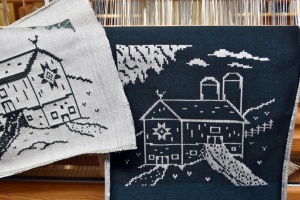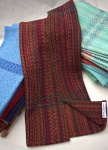 “I don’t think that means what you think that means.”
“I don’t think that means what you think that means.”
Like Inigo Montoya, (“The Princess Bride”) I’ve found myself muttering that phrase lately. And it reminds me of my Mother’s answer whenever we asked what something meant—look it up!
We use a lot of words that are specific to our interests, but do they really mean what we think they mean? If we have to explain a term, can we do it without Google?
I’ve come across some design terms lately that I thought I knew – until I tried to define them. For example, what is the Golden Proportion?
What I learned when I looked it up (Mom would be so proud!) is that if you divide a line unequally into two sections, the ratio of the smaller section to the larger section should be the same as the ratio of the larger section to the whole. That’s the Golden Proportion (or Golden Section, or Golden Ratio). The same with a rectangle and any other shape or space. Our brains like the balance of that proportion.
Then there are design elements — line, shape, pattern, texture, color – and design principles — focal point, contrast, repetition, balance, movement, order.
These didn’t figure in my college courses, so at first glance, they seem sort of esoteric. (Did I use that word right?!) I mean, what exactly do designers mean by unity? Balance? Rhythm? Do I need to go to the deep end of the design pool?
Yes, I do.
In the weaving process, the hardest part for me sometimes is the designing. Why is that? Decision-making mostly, along with lack of confidence. I go back and forth about colors and placement, stripe sequences and where to put borders. It can take the better part of an afternoon to pull together a towel warp. If I can make these design principles a part of my planning, maybe the process will go more smoothly.
If I place a border on a towel using the Golden Ratio, I can trust that it will look good.
If I blend colors from one shade to another using a Fibonacci series — each number the sum of the two previous numbers (0, 1, 1, 2, 3, 5, 8, 13, and so on) – the transition will balance. In weaving, that could be the number of threads or the size of the stripe. Knowing how the system works should make designing less of a guessing game.
So now whenever I come across a design term that is a little vague to me, I will think of Mom and look it up. It will be worth it.

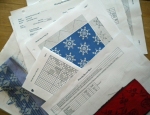
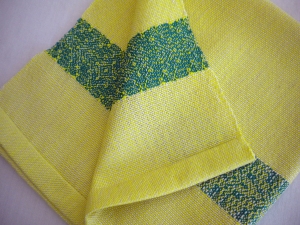
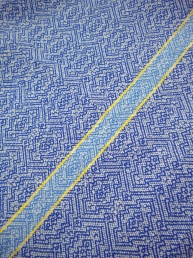

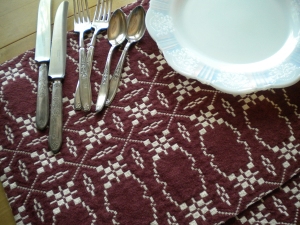

 At a recent guild meeting we watched a portion of Laura Bryant’s DVD “A Fiber Artist’s Guide to Color.” She discusses how to arrange colors so that they don’t “fight” against each other. That reminded me of elementary school report card behavior comments:
At a recent guild meeting we watched a portion of Laura Bryant’s DVD “A Fiber Artist’s Guide to Color.” She discusses how to arrange colors so that they don’t “fight” against each other. That reminded me of elementary school report card behavior comments:

